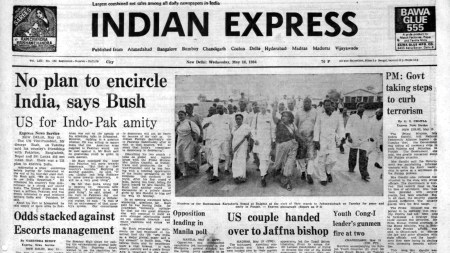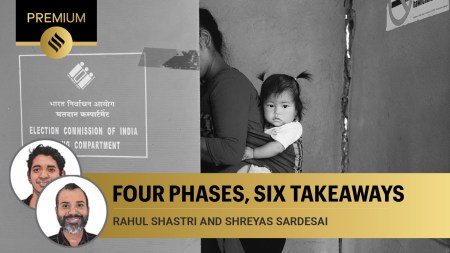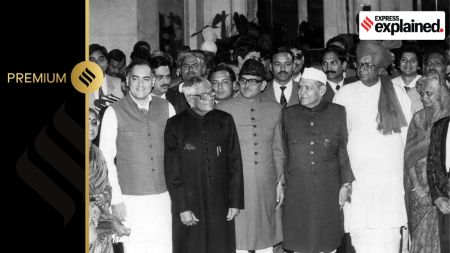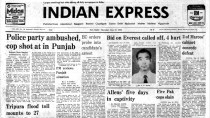- India
- International
Arun Prakash writes: Why India-Pakistan needs a nuclear dialogue — whatever the political situation
India and Pakistan need to urgently initiate a dialogue on nuclear weapons, insulate it from the vagaries of politics, reduce mutual suspicion and enhance transparency
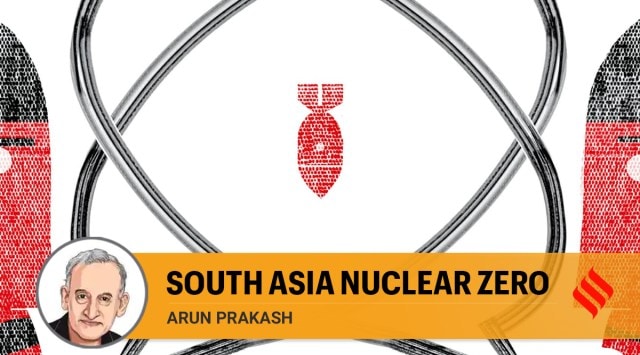 Kidwai, who served for 14 years as the Director-General of Pakistan’s Strategic Plans Division (SPD), was at the heart of Pakistan’s NCA and oversaw the operationalisation of its nuclear deterrent. (Express File Photo)
Kidwai, who served for 14 years as the Director-General of Pakistan’s Strategic Plans Division (SPD), was at the heart of Pakistan’s NCA and oversaw the operationalisation of its nuclear deterrent. (Express File Photo) The nuclear tests of May 1998 by India and Pakistan marked an epochal juncture for South Asia. The Doomsday Clock maintained by the Bulletin of the Atomic Scientists, jumped from 11:43 to 11:51, or just “9 minutes to midnight.”
While, in India, the “Shakti” tests do find celebratory mention, Pakistan observes the Chagai series of nuclear tests as a national day, “Yom-e-Taqbir.” On the 25th anniversary of this event, Lt General Khalid Kidwai (retd), currently, advisor to Pakistan’s National Command Authority (NCA), delivered an address at the Arms Control and Disarmament Centre of the Institute of Strategic Studies, Islamabad.
Kidwai, who served for 14 years as the Director-General of Pakistan’s Strategic Plans Division (SPD), was at the heart of Pakistan’s NCA and oversaw the operationalisation of its nuclear deterrent. Although his talk was for public consumption, given the historic absence of an Indo-Pak nuclear dialogue, some of his statements, if taken at face value, have worrying undertones.
After mentioning the rationale for Pakistan embarking on nuclear weaponisation (“humiliation of the 1971 War followed by India’s nuclear test of May 1974”), Kidwai proceeded to enlighten the audience about the implications of Pakistan’s new policy of Full Spectrum Deterrence (FSD) and how it kept “India’s aggressive designs, including the Indian military’s Cold Start Doctrine, in check.”
While retaining the fig leaf of Credible Minimum Deterrence (CMD), Kidwai went on to mention the “horizontal dimension” of Pakistan’s nuclear inventory, held by the individual strategic force commands of the Army, Navy and Air Force. The “vertical dimension,” of the Pakistan deterrent, he said, encapsulated “adequate range coverage from zero meters to 2,750 km, as well as nuclear weapons of destructive yields at three tiers: Strategic, operational and tactical”.

While the missile range of 2,750 km corresponds roughly to the distance from a launch point in southeast Sindh to the Andaman Islands and indicates the “India-specificity” of the Shaheen III missile, it is the mention of “zero metres” that is intriguing. Pakistan already has the 60-km range Nasr missile, projected as a response to India’s Cold Start doctrine. Therefore, unless used as a colloquialism, Kidwai’s mention of “zero metres” range could only imply a pursuit of ultra short-range, tactical nuclear weapons (TNW), like artillery shells, land mines, and short-range missiles, armed with small warheads, of yields between 0.1 to 1 kilotonne (equivalent of 100 to 1,000 tonnes of TNT).
By shifting from CMD to FSD, with the threat of nuclear first-use to defend against an Indian conventional military thrust, Pakistan is aping the discredited US-NATO Cold War concept of “flexible response”. Fearing their inability to withstand a massive Warsaw Pact armoured offensive, this 1967 doctrine saw the US and NATO allies deploy a large number of TNW to units in the field. However, the dangers of escalation arising from the use of TNW were soon highlighted by US Secretary Defence Robert McNamara’s public confession: “It is not clear how theater nuclear war could actually be executed without incurring a very serious risk of escalating to general nuclear war.” This marked a turning point in US-NATO nuclear strategy.
Kidwai’s speech contains three statements of note. First, he attempts to dilute India’s declared policy of “massive retaliation” (MR) in response to a nuclear strike by claiming that Pakistan possesses an entire range of survivable nuclear warheads of desired yield in adequate numbers to respond to India’s MR. He adds, “Pakistan’s counter-massive retaliation can therefore be as severe (as India’s) if not more.”
Second, in an attempt to downplay India’s (inchoate) ballistic missile defence (BMD), he declares that in a “target-rich India”, Pakistan is at liberty to expand the envelope and choose from countervalue, counterforce and battlefield targets, notwithstanding the indigenous BMD or the Russian S-400” (air-defence systems).
Far more significant is Kidwai’s declaration that, since Pakistan’s missiles can threaten the full extent of the Indian landmass and island territories, “…there is no place for India’s strategic weapons to hide” (emphasis added). The assumption, so far, was that, given its limitations in terms of missile accuracy, real-time surveillance and targeting information, Pakistan would follow a “countervalue” or “counter-city” targeting strategy. The specific targeting of India’s nuclear arsenal, especially, if undertaken by conventional (non-nuclear) missiles, would add a new dimension to the India-Pakistan nuclear conundrum.
Since they were delivered amid Pakistan’s acute financial crisis as well as the ongoing political turmoil and civil-military tensions, one may be tempted to dismiss Kidwai’s remarks. However, as the longest-serving former head of the SPD and architect of Pakistan’s nuclear deterrent, his views are widely-heard and deserve our attention.
Having voluntarily pledged “no first use” (NFU), India’s 2003 Nuclear Doctrine espoused a “credible minimum deterrent” and promised “massive retaliation” in response to a nuclear first strike. Since then, our two adversaries, China and Pakistan, have expanded and upgraded their nuclear arsenals, presumably, with corresponding updating of doctrines. India’s strategic enclave has, however, not only maintained a stoic silence and doctrinal status quo but also defended the latter.
The BJP’s 2014 Election Manifesto, had undertaken to “revise and update” India’s nuclear doctrine and to “make it relevant to current times,” but this promise has not been kept. Thus, India currently faces a moral dilemma as well as a question of “proportionality”: Will the loss of a few tanks or soldiers to a Pakistani nuclear artillery salvo, on its own soil, prompt India to destroy a Pakistani city of few million souls? Since India too has developed a family of tactical missiles, capable of counterforce strikes, does it indicate a shift away from CMD and NFU, calling for a response from our adversaries?
These are just some of the manifold reasons why there is a most urgent need for the initiation of a sustained nuclear dialogue between India and Pakistan, insulated from the vagaries of politics. Such an interaction, by reducing mutual suspicion and enhancing transparency, might slow down the nuclear arms race and mindless build-up of arsenals.
The writer is a retired chief of naval staff
EXPRESS OPINION
More Explained
May 17: Latest News
- 011 day ago
- 021 day ago
- 0320 hours ago
- 0419 hours ago
- 0519 hours ago



